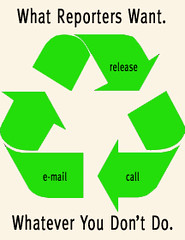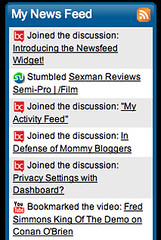My wife owns a fake Rolex. She bought it for $20 in Mexico. It’s good enough that it even has a screw-backed case and automatic second hand. Yep, just like the real thing.
Some people are impressed that she owns a Rolex, never knowing it isn’t real until she laughs and tells them. Last time it needed a battery, the jeweler even had to take a second look. He said most people would never know; it was the best “Folex” he had seen.
Alexa ranking is a little like that. People use it for all sorts of algorithms and bragging rights. But the thing is, Alexa rank, which they say measures popularity and traffic on the Internet, is becoming much more like a “Folex” than the real thing. For me, it took an EntreCard experiment to see what others have said for years.
EntreCard Reveals Some Alexa Weaknesses
A few weeks ago, I placed an EntreCard ad banner, which is basically a blogger ad sharing network, on our Back Lot blog. The Back Lot blog is an experimental storefront blog that mostly helps non-profit organizations.
The reason was simple enough. From time to time, I add widgets and other online tools to the Back Lot blog in order to gain a better understanding about how they work, especially to see if they might work for some some social media clients. Sometimes I add these widgets here too. Sometimes I do not.
What struck me after a few weeks was not only the impact of EntreCard on the blog, but impact of EntreCard on Alexa. With EntreCard, the Back Lot blog eclipsed Copywrite, Ink. blog in terms of Alexa ranking. Specifically, it looks like the Back Lot blog receives almost three times the amount of traffic.
However, I also know from multiple analytic programs that this is not the case. This blog averages about 300-500 visitors every day as opposed to Back Lot, which averages about 30-40 visitors every day. So what’s the difference?
• There is high percentage of Alexa tool bar users on EntreCard.
• Many Alexa tool bar users who read this blog subscribe to the feed.
The net result is that this blog looks like it is losing traffic despite gaining traffic whereas the other blog is maintaining but looks like it is increasing. So yesterday, I thought I would add EntreCard to this blog and see what happens. I'll report on it in a few weeks.
Of course, all this is not to say Alexa is bad; it has its place in the world and some people are really good about putting it to work for them. There plenty of people who have even written up twenty or so tips.
Some of those tips work. Some of them aren’t really related to Alexa at all, but they might help gin up traffic anyway — that is, if you are looking for traffic. Not everyone places traffic high on the priority list. Some folks, like me, measure other outcomes.
Sometimes Alexa Comparisons Work, Sometimes They Don’t
What really strikes me about all this is that I could make a lightly visited blog appear to have more traffic than a respectfully visited blog with 10-20 times more readers. Even more amazing to me is that some people know this, but still count Alexa as a measure of their success in between transparency posts, including comparisons to show how their blogs are gaining ground on other people.
Please don’t get me wrong. Alexa can be useful for some measures, just not in the way some people use it, including multi-rank measures. Likewise, I’m not saying anyone who boasts about their Alexa rank is questionable. Rather, I liken it to wearing a fake Rolex. But unlike my wife, they never tell anyone.

Some people are impressed that she owns a Rolex, never knowing it isn’t real until she laughs and tells them. Last time it needed a battery, the jeweler even had to take a second look. He said most people would never know; it was the best “Folex” he had seen.
Alexa ranking is a little like that. People use it for all sorts of algorithms and bragging rights. But the thing is, Alexa rank, which they say measures popularity and traffic on the Internet, is becoming much more like a “Folex” than the real thing. For me, it took an EntreCard experiment to see what others have said for years.
EntreCard Reveals Some Alexa Weaknesses
A few weeks ago, I placed an EntreCard ad banner, which is basically a blogger ad sharing network, on our Back Lot blog. The Back Lot blog is an experimental storefront blog that mostly helps non-profit organizations.
The reason was simple enough. From time to time, I add widgets and other online tools to the Back Lot blog in order to gain a better understanding about how they work, especially to see if they might work for some some social media clients. Sometimes I add these widgets here too. Sometimes I do not.
What struck me after a few weeks was not only the impact of EntreCard on the blog, but impact of EntreCard on Alexa. With EntreCard, the Back Lot blog eclipsed Copywrite, Ink. blog in terms of Alexa ranking. Specifically, it looks like the Back Lot blog receives almost three times the amount of traffic.
However, I also know from multiple analytic programs that this is not the case. This blog averages about 300-500 visitors every day as opposed to Back Lot, which averages about 30-40 visitors every day. So what’s the difference?
• There is high percentage of Alexa tool bar users on EntreCard.
• Many Alexa tool bar users who read this blog subscribe to the feed.
The net result is that this blog looks like it is losing traffic despite gaining traffic whereas the other blog is maintaining but looks like it is increasing. So yesterday, I thought I would add EntreCard to this blog and see what happens. I'll report on it in a few weeks.
Of course, all this is not to say Alexa is bad; it has its place in the world and some people are really good about putting it to work for them. There plenty of people who have even written up twenty or so tips.
Some of those tips work. Some of them aren’t really related to Alexa at all, but they might help gin up traffic anyway — that is, if you are looking for traffic. Not everyone places traffic high on the priority list. Some folks, like me, measure other outcomes.
Sometimes Alexa Comparisons Work, Sometimes They Don’t
What really strikes me about all this is that I could make a lightly visited blog appear to have more traffic than a respectfully visited blog with 10-20 times more readers. Even more amazing to me is that some people know this, but still count Alexa as a measure of their success in between transparency posts, including comparisons to show how their blogs are gaining ground on other people.
Please don’t get me wrong. Alexa can be useful for some measures, just not in the way some people use it, including multi-rank measures. Likewise, I’m not saying anyone who boasts about their Alexa rank is questionable. Rather, I liken it to wearing a fake Rolex. But unlike my wife, they never tell anyone.






















